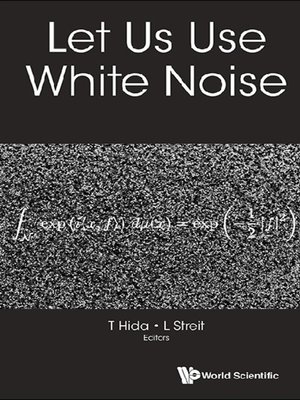
Sign up to save your library
With an OverDrive account, you can save your favorite libraries for at-a-glance information about availability. Find out more about OverDrive accounts.
Find this title in Libby, the library reading app by OverDrive.



Search for a digital library with this title
Title found at these libraries:
| Library Name | Distance |
|---|---|
| Loading... |
Why should we use white noise analysis? Well, one reason of course is that it fills that earlier gap in the tool kit. As Hida would put it, white noise provides us with a useful set of independent coordinates, parametrized by 'time'. And there is a feature which makes white noise analysis extremely user-friendly. Typically the physicist — and not only he — sits there with some heuristic ansatz, like e.g. the famous Feynman 'integral', wondering whether and how this might make sense mathematically. In many cases the characterization theorem of white noise analysis provides the user with a sweet and easy answer. Feynman's 'integral' can now be understood, the 'It's all in the vacuum' ansatz of Haag and Coester is now making sense via Dirichlet forms, and so on in many fields of application. There is mathematical finance, there have been applications in biology, and engineering, many more than we could collect in the present volume.Finally, there is one extra benefit: when we internalize the structures of Gaussian white noise analysis we will be ready to meet another close relative. We will enjoy the important similarities and differences which we encounter in the Poisson case, championed in particular by Y Kondratiev and his group. Let us look forward to a companion volume on the uses of Poisson white noise.The present volume is more than a collection of autonomous contributions. The introductory chapter on white noise analysis was made available to the other authors early on for reference and to facilitate conceptual and notational coherence in their work.







